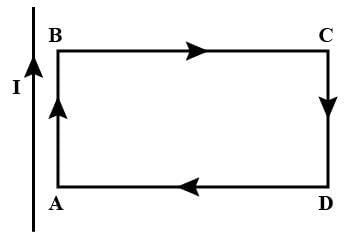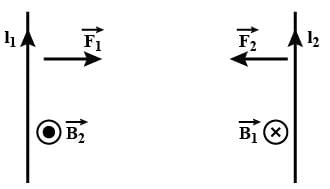Test: Force on Current Carrying Conductor - NEET MCQ
10 Questions MCQ Test Physics Class 12 - Test: Force on Current Carrying Conductor
An electron and proton enter a magnetic field with equal velocities. Which one of them experiences a greater force?
Two thin long parallel wires separated by a distance b are carrying a current i ampere each. The magnitude of the force per unit length exerted by one wire on the other is
A rectangular loop carrying a current I is situated near a long straight wire such that the wire is parallel to the one of the sides of the loop and is in a plane of the loop. If a steady current I is established in wire as shown in figure, the loop will
In two current carrying conductors parallel currents________, anti parallel currents_________ .
No force is exerted by magnetic field on a stationary
Along an infinitely long conductor carrying a current of 8 A we keep another conductor of length 5 m carrying a current of 3 A. Both the conductors are 10 cm apart. Find the force on small conductor.
We use _________ to find the direction of force when two current carrying conductors are kept parallel to each other.
The connecting wires of a battery of an automobile carry 200 A of current. Calculate the force per unit length between the wires if they are 50 cm long and 2 cm apart?
A 2 cm long copper wire having mass of 6 gm, dips in to two mercury pools to form a complete circuit. The wire is placed between the poles of a magnet which causes a field strength of 0.3 T. Find the initial upward acceleration of copper wire after 100 A of current is passed through the wire (g = 10 m/s2)
|
97 videos|334 docs|102 tests
|




















